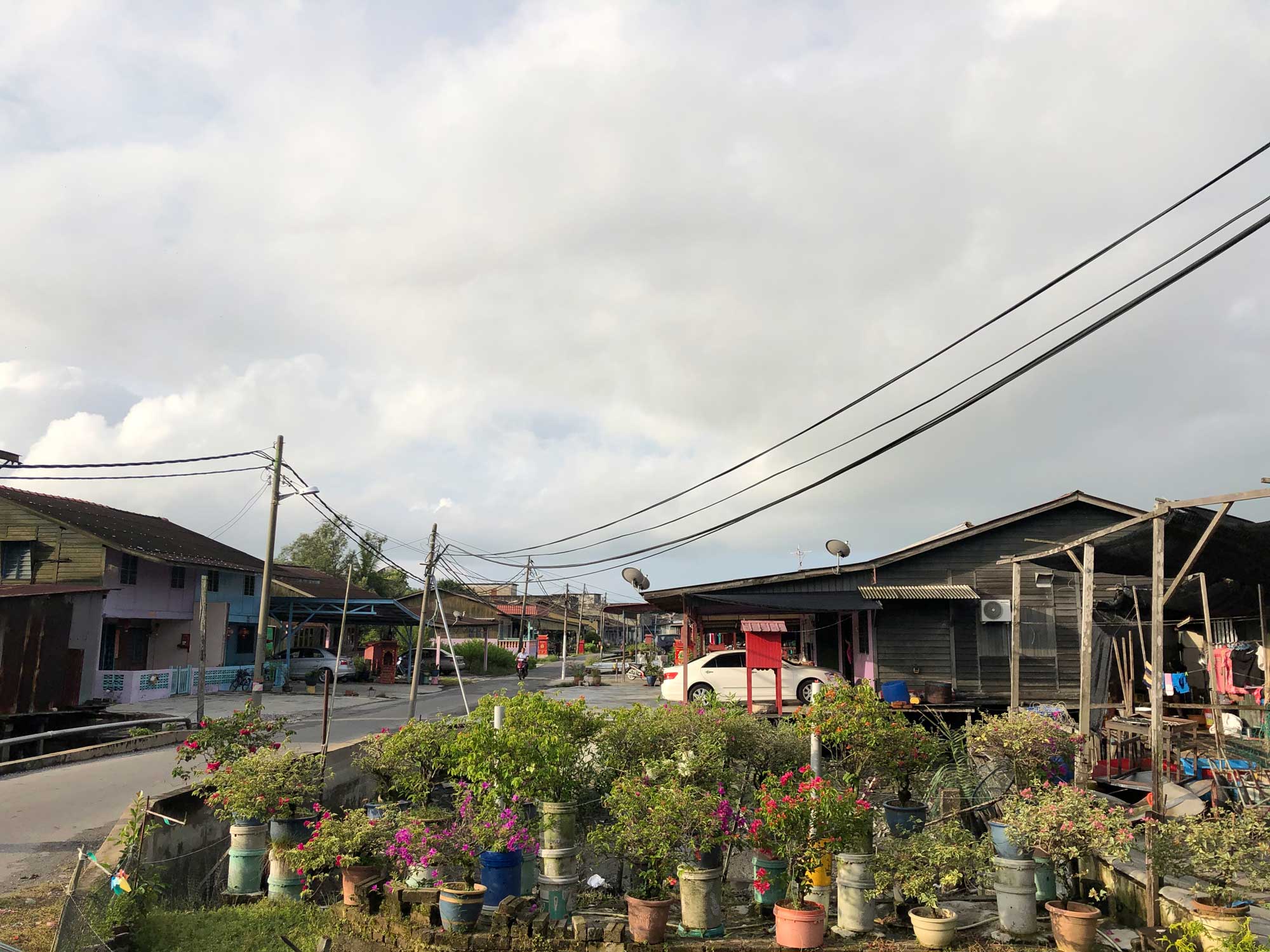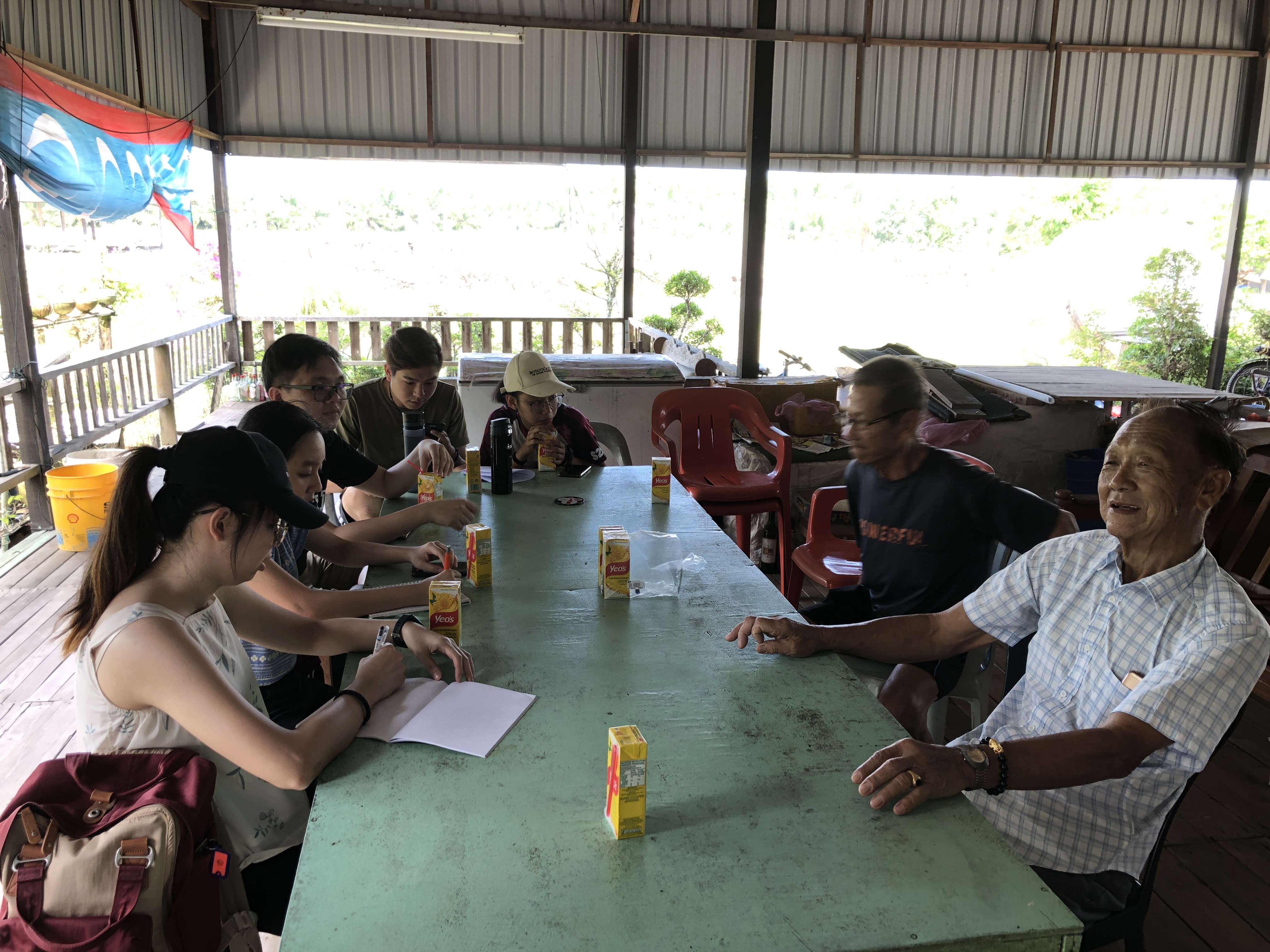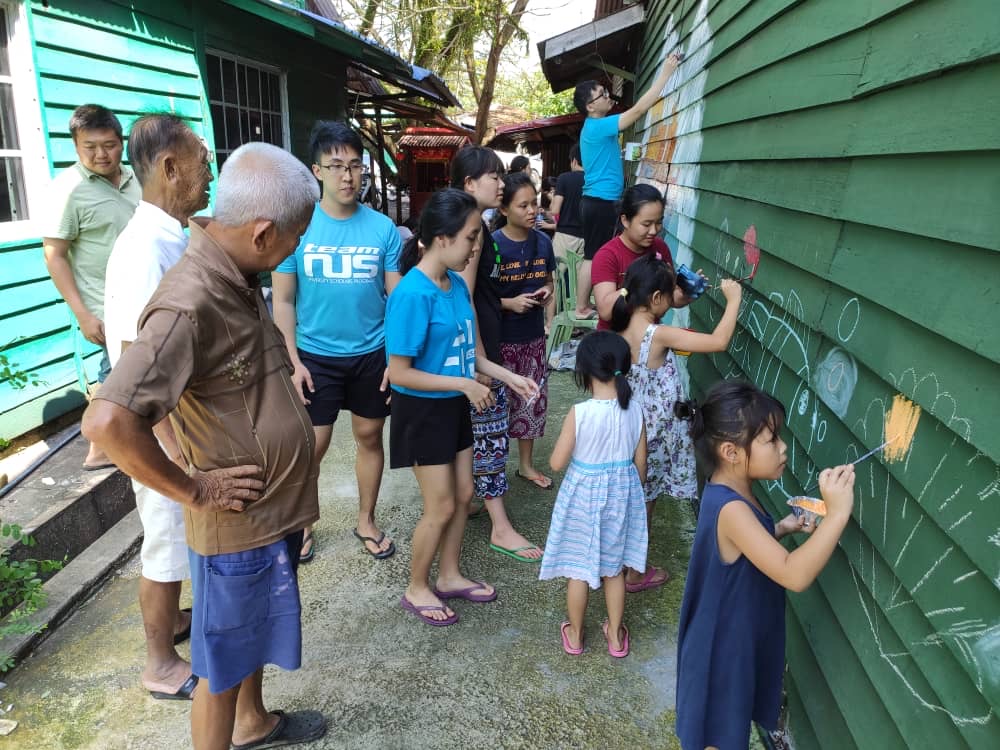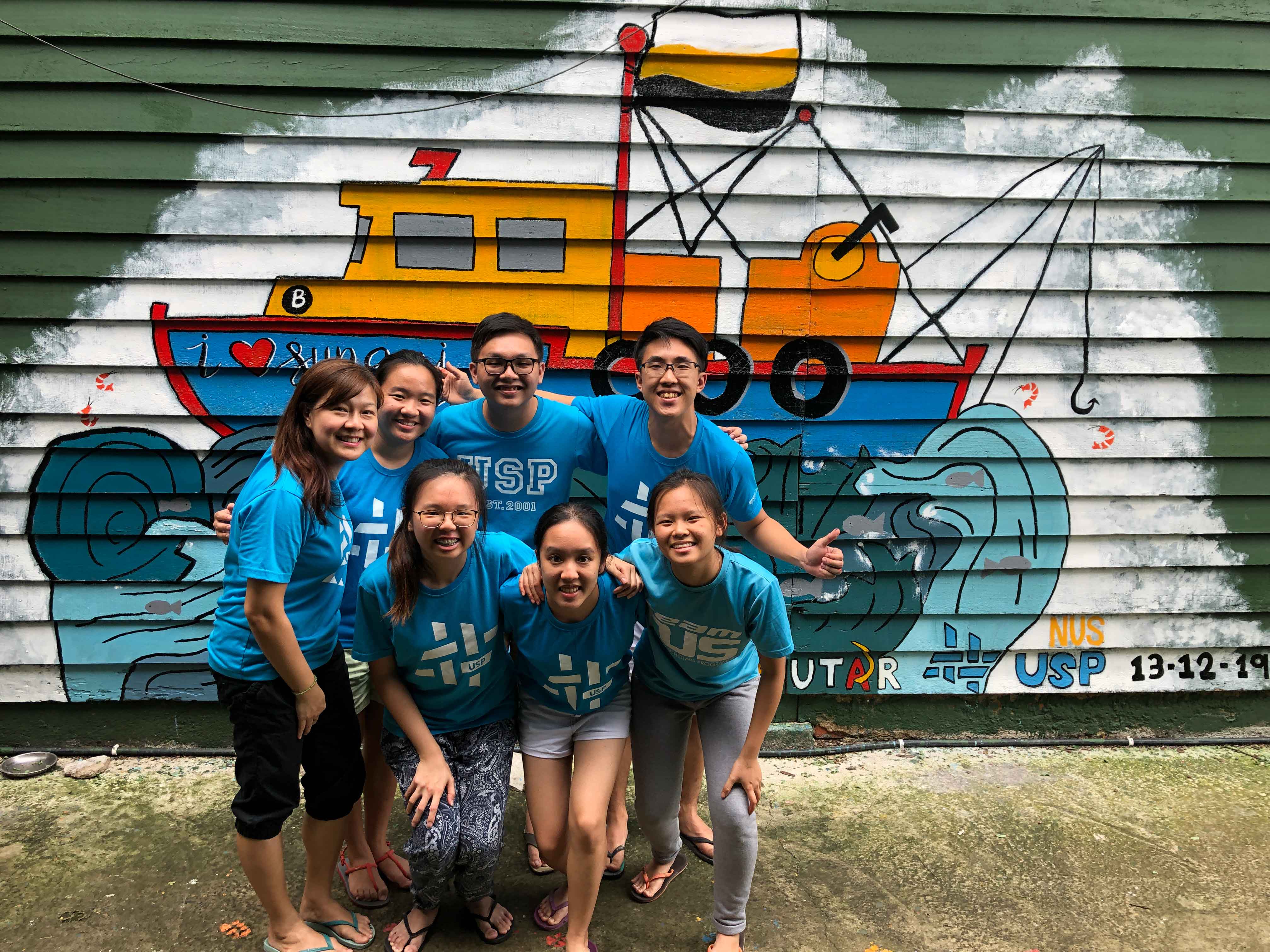Community Before Development
A student reflection contributed by Goh Xin Hui (Social Work + USP, Class of 2022)

For a week, we were hosted by the village head of Sungai Tiang and her family members. We lived with them and experienced their warm and hospitable culture – we felt the nostalgic ‘kampung spirit’. Sungai Tiang is one of the eight main fishing villages in Perak, Malaysia, with a population of only over 3000 people. Not surprisingly, the villagers’ main source of livelihood is fishing. Chinese people make up an overwhelming majority in the village, with only a few Indian, Malay or transnational households. Now, it is also classified as a New Village.
As a student majoring in Social Work and minoring in Community Development and Leadership, I was thrilled to apply the theoretical frameworks that I have learned over the past few semesters. I was especially excited as it was my first overseas community experience since my formal education on community development. Looking back, this ethnographic experience allowed me to appreciate what the community development process is actually like – creative, relationship-focused, and reiterative. Critically, I learned a valuable lesson from the villagers (the best lecturers) that in community development, the community should come before development. In other words, the interests and perspectives of the community members should be prioritised above development goals.
Problematic understanding of ‘Development’
I was cognitively aware of the principle of being community-centric; any community development textbook would probably give you similar advice. But it is one thing to know and another thing to adhere to the principle. We were tasked to adopt the Asset-Based Community Development framework to map out the assets in the community that are valuable and make recommendations for development opportunities, especially in the aspect of economic development. As mentioned previously, fishing is the main economic activity in the village. Often, families would supplement their income from doing small businesses like selling dried fish stocks or run a coffee shop. Are they rich? Well, it depends on the baseline of comparison but are they living comfortably? Most would readily agree that they are contented with their present lives.
It is our innate human tendency to have a preconceived schema of what we hope to do in a community development project. But the concept of development becomes problematic if we fail to question our assumptions. What do we want a community to develop into? What do we mean when we label a locality as ‘less developed’? What do these labels mean to the community? Who takes ownership of the development? Economic development, amongst other aspects of development, was clearly not the community’s aspiration. In fact, what the villagers look forward to are festive seasons as these are times when their family members working in the cities would return. What they want is to experience this sense of togetherness with their loved ones. Therefore, it was crucial that we redefined the development goals together with the community members, aligning our goals with their aspirations. This is community development, community before development.
Shift from being task-focused to relationship-focused
Our methodology in this project largely consists of semi-structured interviews and observations as the main data collection methods. These methods were chosen with the intention of eliciting stories to map out the cultural assets in the community. While the experience of interviewing was not unfamiliar to me, it did feel like a disruption to the momentum of the day-to-day living of the people. The tinge of formality associated with interviews also felt out of place. In the process, I figured that, essentially, a task-focused conversation is an interview while a relationship-focused interview is a conversation. Data collection started to look different to me. Instead of scheduling interviews with the villagers, I found that spontaneous chit-chat moments over meals or during a motorbike ride from one place to another were more authentic and less intrusive opportunities to connect with the villagers. Again, I understood the importance of engaging a community with methods that they are familiar with and not using the ones that they are foreign to.

Creativity in community work
One of the greatest highlights of the trip was creating a mural art with the villagers over the span of only three days. We were totally unaware of this project until the third day in the village. This mural art project was initiated by the village head and I am relieved that the idea came from the community, not enforced by either participating university. Given more time, I would love to engage the villagers in designing the mural art so that it feels more personal to them. Nevertheless, the painting process drew onlookers. Some uncles gave suggestions on how to embellish the painting, such as drawing fish in the water. A few children eventually tried their hands on painting as well. After the mural art was completed, we saw some villagers taking photos with the painting. Several uncles and aunties also made jocular requests for us to paint some lucky lottery numbers for them. It was very heartening that the mural art became one of the talking points amongst the villagers. I always held a strong belief that as community developers, we need to be creative in our engagement methods. But this experience gave me an added perspective that art as an engagement platform
prompts the people to be imaginative; we all need to imagine a future that we want the community to become so that we can take steps towards that.


Ultimately, there is a dimension of duality to our role as community developers. On one hand, we should not forget our identity as ‘outsiders’ entering a community as well as the external influences that we bring to the community. However, we need to strive towards being like an ‘insider’ to truly embrace a community’s way of life. I doubt one can make a meaningful impact without aligning themselves with the aspirations of the community. Fundamentally, community development boils down to a straightforward, self-evident principle – prioritise the community before development.

